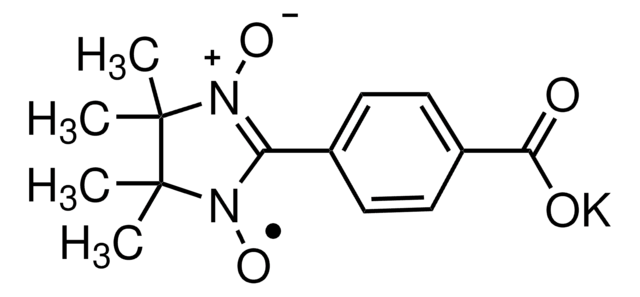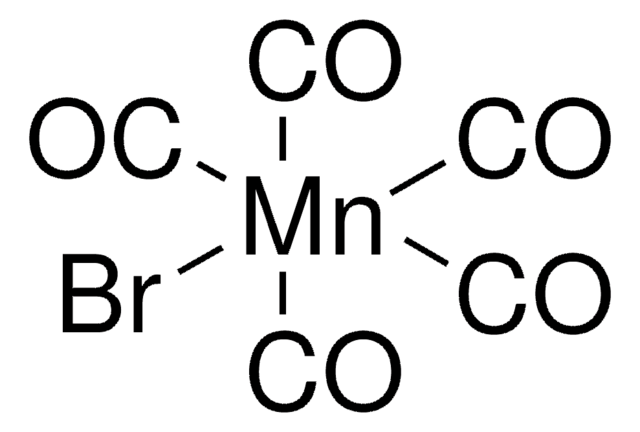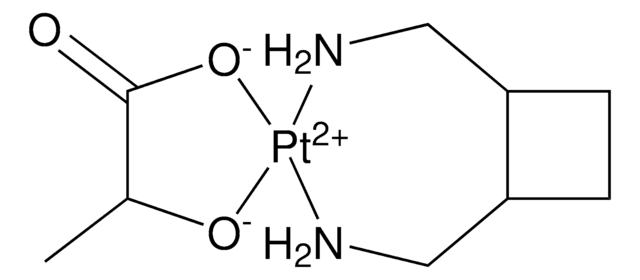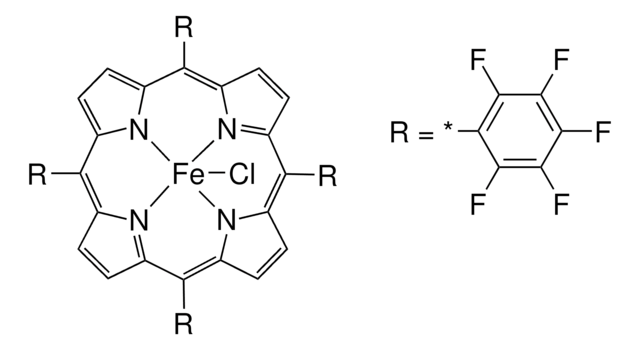推荐产品
形狀
powder
品質等級
儲存條件
desiccated
顏色
white to beige
溶解度
H2O: 20 mg/mL, clear
運輸包裝
wet ice
儲存溫度
−20°C
SMILES 字串
[Ru+2].[Cl-].NCC(=O)[O-].O=[C].O=[C].O=[C]
InChI
1S/C2H5NO2.3CO.ClH.Ru/c3-1-2(4)5;3*1-2;;/h1,3H2,(H,4,5);;;;1H;/q;;;;;+2/p-2
InChI 密鑰
BICHHHDSEZXKNN-UHFFFAOYSA-L
應用
CORM-3(一氧化碳(CO)释放分子-3)已可用于研究其对巨噬细胞糖酵解所致NLRP3(含热蛋白结构域3富含亮氨酸重复序列的受体)炎性体激活以及高血糖症诱导的 IL-1β(白细胞介素-1 β)产生的影响。它还被用于研究其对原代兔晶状体上皮细胞中 H2O2诱导的细胞凋亡的保护作用。
生化/生理作用
CORM-3是一种水溶性一氧化碳释放分子。
CORM-3是一种水溶性一氧化碳(CO)释放分子,可用于研究CO对细胞系统的影响。最近研究发现,在血红素氧化酶催化的血红素降解过程中产生的一氧化碳(CO),是哺乳动物细胞中重要的气体信号传导介质。CORM-3已被证明具有抗炎和心脏保护作用。
CO具有抗凋亡功能,并且能够抗氧化损伤,促进内皮愈合。已知CORM-3对移植、心肌梗塞和类风湿性关节炎具有治疗效果。
儲存類別代碼
11 - Combustible Solids
水污染物質分類(WGK)
WGK 3
閃點(°F)
Not applicable
閃點(°C)
Not applicable
CORM-3 Reactivity toward Proteins: The Crystal Structure of a Ru (II) Dicarbonyl? Lysozyme Complex.
Santos-Silva T, et al.
Journal of the American Chemical Society, 133(5), 1192-1195 (2011)
Carbon monoxide (CO) inhibits hydrogen peroxide (H2O2)?induced oxidative stress and the activation of NF-?B signaling in lens epithelial cells.
Huang Y, et al.
Experimental Eye Research, 166, 29-39 (2018)
Carbon monoxide regulates glycolysis-dependent NLRP3 inflammasome activation in macrophages.
young S H, et al.
Biochemical and Biophysical Research Communications, 493(2), 957-963 (2017)
Ricardo Coletti et al.
Journal of neuroendocrinology, 31(2), e12686-e12686 (2019-01-12)
Nitric oxide (NO) negatively modulates the secretion of vasopressin (AVP), oxytocin (OT) and atrial natriuretic peptide (ANP) induced by the increase in extracellular osmolality, whereas carbon monoxide (CO) and hydrogen sulphide (H2 S) act to potentiate it; however, little information
Do Won Lee et al.
Biochemical and biophysical research communications, 493(2), 957-963 (2017-09-25)
Low dose of carbon monoxide (CO) has anti-inflammatory role through various signaling pathways. Cellular metabolism has been implicated in the activation of inflammation in immune cells. However, the mechanisms by which CO-dependent metabolic regulation affect the immune response remain unclear.
我们的科学家团队拥有各种研究领域经验,包括生命科学、材料科学、化学合成、色谱、分析及许多其他领域.
联系技术服务部门








